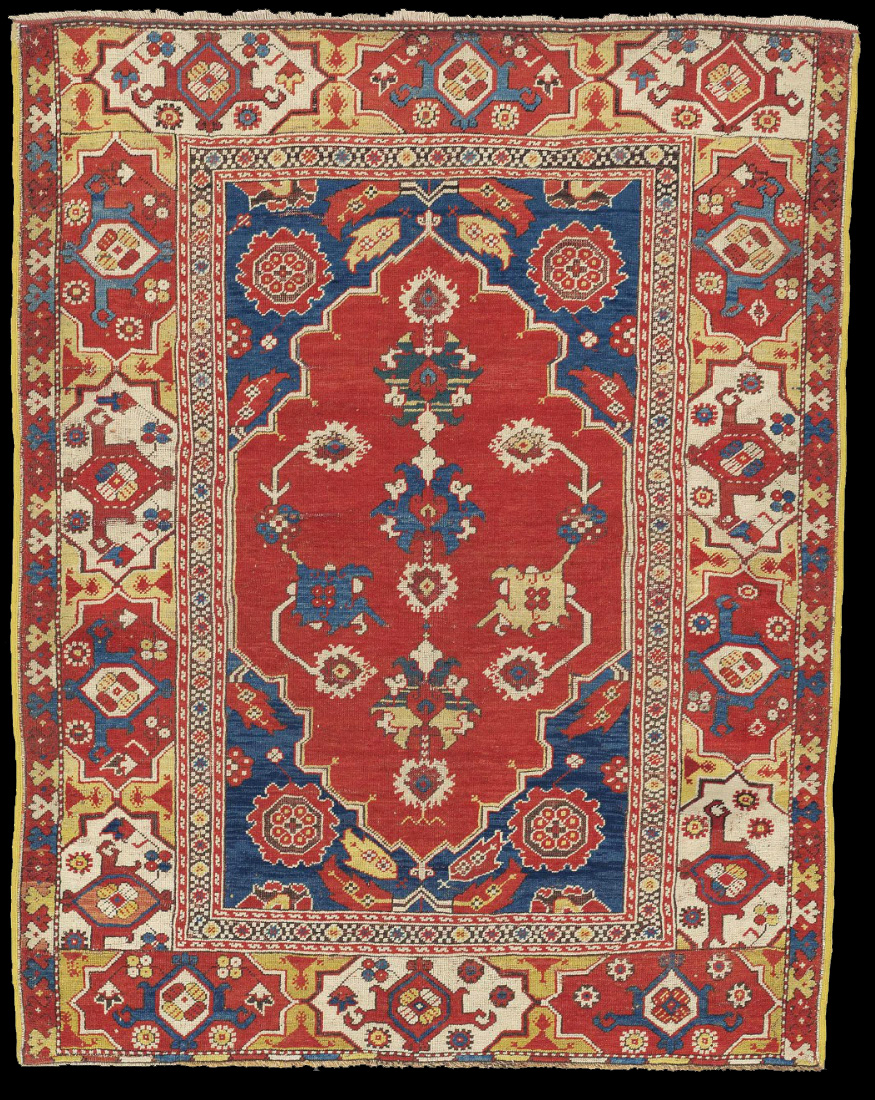|
A 'TRANSYLVANIAN' DOUBLE NICHE RUG
PROBABLY
USHAK, WEST ANATOLIA, SECOND HALF 17TH CENTURY
Price Realized
£35,000 ($58,135)
Estimate £10,000 - £15,000 ($16,560 - $24,840)
Sale Information
Christies SALE 1519 —
ORIENTAL RUGS & CARPETS
8 April 2014
London, King Street
Lot 49
A 'TRANSYLVANIAN' DOUBLE NICHE RUG
PROBABLY USHAK, WEST ANATOLIA, SECOND HALF 17TH CENTURY
Good pile, a
few small repairs, selvages replaced, missing outer stripe at each end
4ft.9in. x 3ft.10in. (145cm. x 117cm.)
Lot Notes
The Evangelical
churches, parish storerooms and museums of Transylvania, a region in the
centre of Romania, contain nearly 400 Turkish rugs and fragments dating
from the 15th to the 18th century. This surprising and extraordinary group
form the most important collection of Ottoman Turkish rugs outside the
Islamic world and constitutes a fascinating cross-section of Anatolian
weaving production. Of this group about 200 of these are the famous
'Transylvanian' group, the largest collection of these weavings to have
survived anywhere in the world. The term 'Transylvanian' has been in use
since the beginning of the 20th century to describe the coherent and
striking group of rugs with a relatively narrow range of motifs and
colours and double or single niche designs with cartouche borders, such as
the present rug and lot 52. Over the years the term has been expanded to
include column rugs and plain field prayer rugs, such as lot 13 and 51 in
the present sale.
Turkish rugs in this region were not only a
symbol of wealth and luxury but they also played an important role in
social ritual. For example, a marital engagement would take place by
standing on a rug which then was expected to be donated to the respective
church (Marino and Clara Dall'Oglio, 'Transylvanian Rugs - Some
Considerations and Opinions', Hali, vol.1, no.3, Autumn 1978, pp.276-277).
A tradition that helps to explain the large number of rugs found in
Transylvanian churches. For example, in the Black Church in Brasov alone
there are 151 Ottoman rugs dating to the 18th century and earlier.
The present rug has particularly good colouring and is closely related to
a number of double niche rugs in the Black Church at Brasov illustrated in
Stefano Ionescu, Antique Ottoman Rugs in Transylvania, Rome, 2005,
pp.120-127. For a related double niche rug with additional vase motifs
please see lot 52 in the present sale.
|

